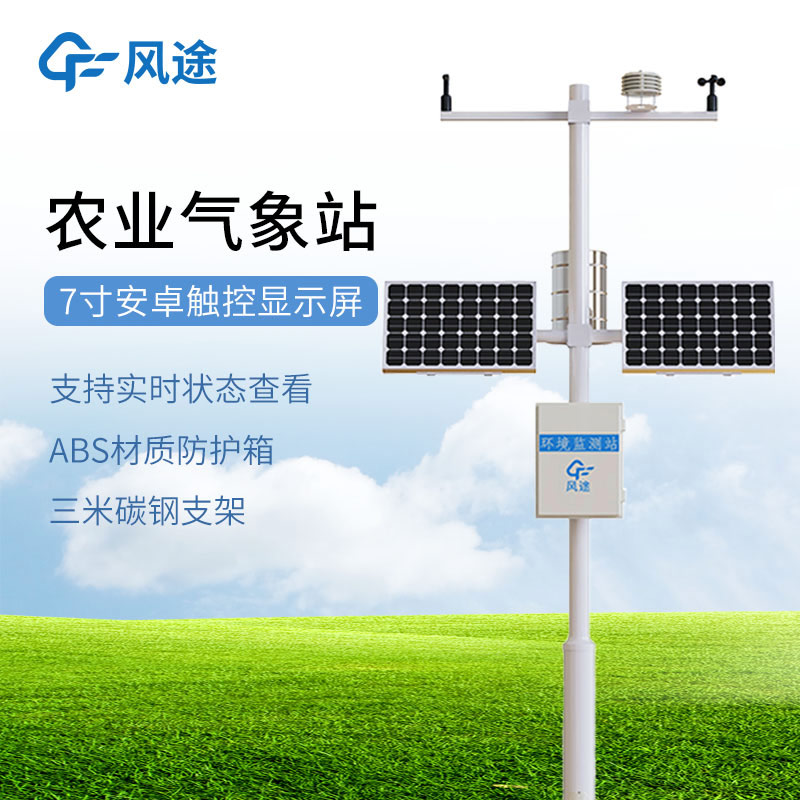Shandong Fengtu IOT Technology Co., Ltd
Sales Manager:Ms. Emily Wang
Cel,Whatsapp,Wechat:+86 15898932201
Email:info@fengtutec.com
Add:No. 155 Optoelectronic Industry Accelerator, Gaoxin District, Weifang, Shandong, China

Sales Manager:Ms. Emily Wang
Cel,Whatsapp,Wechat:+86 15898932201
Email:info@fengtutec.com
Add:No. 155 Optoelectronic Industry Accelerator, Gaoxin District, Weifang, Shandong, China
time:2024-11-12 09:40:23 source:Weather Station viewed:299 time
On the stage of nature, agriculture and meteorology are an inseparable pair of dancing partners. The growth, development, yield, and quality of agricultural crops are all directly affected by the weather. Temperature, light, and moisture, these three meteorological elements, constitute the cornerstone of agricultural production.
Imagine that wheat thrives in the cool northern regions, while rice sways gracefully in the warm southern areas. Their preference for temperature is a direct manifestation of how meteorological conditions affect crop distribution. However, the unpredictability of the weather also brings uncertainties to agricultural production. Cold waves in spring may damage tender buds, heavy rain and high temperatures in summer may destroy crops, early cold in autumn may affect crop pollination, and severe cold in winter may threaten the survival of perennial plants.
Nevertheless, after thousands of years of dealing with agriculture, humans have accumulated much wisdom in coping with meteorological disasters. Especially in modern times, with the accurate forecasts and disaster warnings from meteorological departments, farmers can take preventive measures in advance. Before disasters strike, they can take active actions, such as keeping crops warm, strengthening flood - prevention facilities, and preparing for drought resistance.
In terms of disaster prevention and response, Agricultural Weather Stations can monitor the trends of natural disasters such as frost, drought, and floods, and take measures in advance. Moreover, meteorological elements are related to pests and diseases. Meteorological stations can, in combination with the occurrence patterns of pests and diseases, remind farmers to take preventive measures in advance during weather conditions suitable for the breeding of pests and diseases, thus ensuring the healthy growth of crops.
Determine the best sowing and harvesting times based on information such as temperature and humidity. For example, sowing corn when the soil temperature is appropriate can ensure the germination rate, and harvesting during fine weather can prevent crop damage. Soil moisture data guides irrigation, and meteorological conditions assist in fertilization decisions to avoid fertilizer loss.

The Visibility Sensor is a specialized sensor device designed for automatic and continuous monitoring of atmospheric visibility, playing a vital role in fields such as meteorological observation and environmental monitoring. Its core working mechanism is based on the principle of forward scattering....
In today's booming tourism industry, the installation of scenic weather stations in scenic areas has become a crucial measure to enhance the level of operation management and the tourist experience.From the perspective of enhancing the tourist experience, the weather warning function of the scen...
The Portable Weather Station is a high-precision comprehensive ground observation device with mobile characteristics. It is portable, quick to install, and boasts high observation accuracy, thus being widely used in the field of meteorological monitoring.This device can accurately measure multiple b...
The environmental grid monitoring station manufacturer [Fengtu Technology], located in Weifang, Shandong Province, has been engaged in the research and development and sales of meteorological environmental monitoring equipment since its establishment in 2017, and has achieved fruitful results in the course of many years of development....